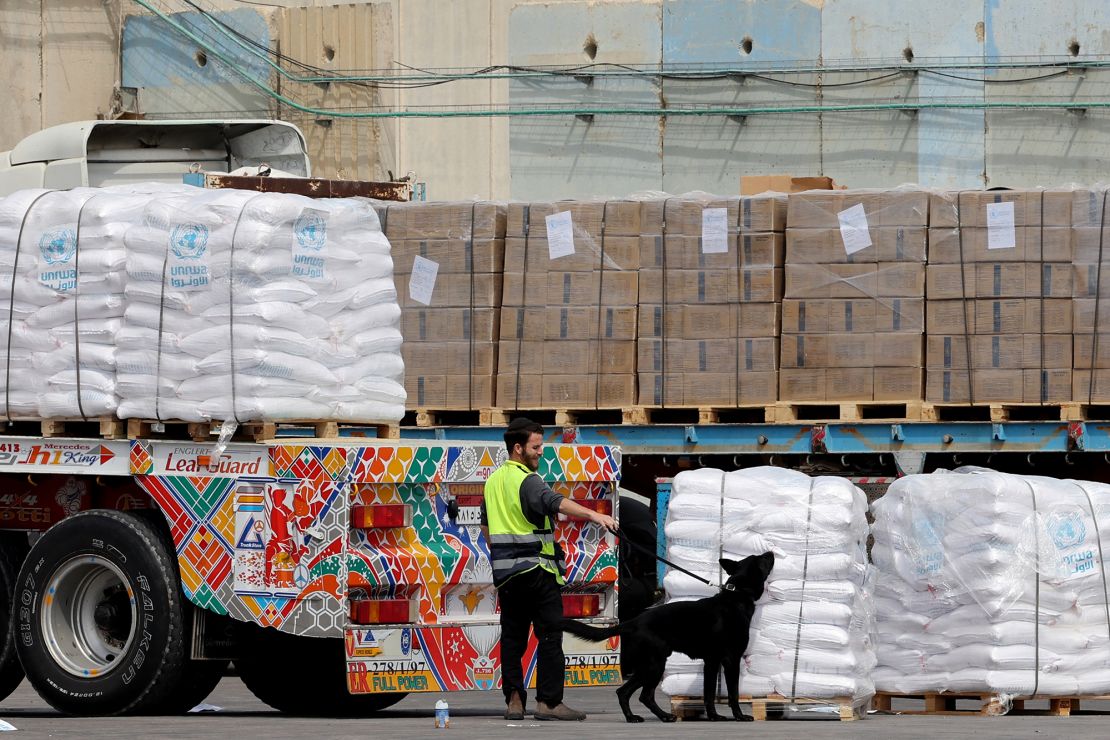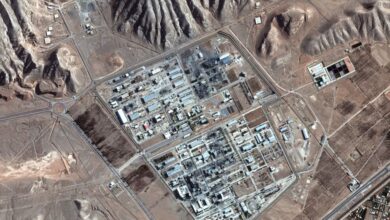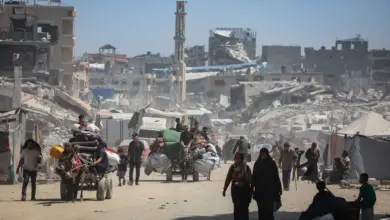
Editor’s Note: A version of this story appears in CNN’s Meanwhile in the Middle East newsletter, a three-times-a-week look inside the region’s biggest stories. Sign up here.
Israel this week has begun to take several major steps to ramp up humanitarian aid to Gaza amid intense pressure from the United States, but humanitarian officials said progress was slow-going and that much more needed to be done, as warnings grew of famine in the Palestinian enclave.
Israel says it has nearly doubled the number of aid trucks entering Gaza daily this week and overnight the Israeli military opened a new crossing point into northern Gaza, allowing a first convoy of trucks in.
“We’ve been asking for this for months,” Jamie McGoldrick, the UN’s humanitarian coordinator in Jerusalem, told CNN. “We’ve been calling out the fact that there’s a real humanitarian crisis in the north, where famine is imminent…it’s only now that we start to see the announcements.
McGoldrick also stressed that Israel’s responsibility does not end at getting aid trucks in, but also ensuring that humanitarian aid agencies have the ability to safely distribute the aid inside Gaza.
Israel last week approved the reopening of the Erez crossing between Israel and northern Gaza for the first time since the October 7 Hamas attacks, as well as using the Israeli port of Ashdod to help transfer more aid. The announcement came hours after US President Joe Biden pushed Prime Minister Benjamin Netanyahu to allow more aid into the enclave.
The opening of the port has yet to materialize, but Israel’s military has now opened a new crossing point into northern Gaza – opting to open a new one rather than retrofitting the Erez crossing to accommodate aid trucks. The military declined to specify the location of the crossing or the number of aid trucks.
Israel’s plans to ramp up aid come as USAID Administrator Samantha Power said Wednesday it is “credible” to assess that famine is already occurring in parts of Gaza as the war between Israel and Hamas continues. Power is the first US official to publicly agree with an assessment that famine is already taking place.
McGoldrick has welcomed the new announcements by the Israeli government but says more needs to be done to facilitate operations inside Gaza.
McGoldrick told CNN that the logistical complications are numerous and take time to resolve. He also said Israel’s ongoing restrictions on movement inside the strip complicate matters.
“We get lots of trucks coming from Israel, we can’t automatically put those trucks straight into Gaza, they have to be taken off or they have to be segregated from water, from food, from medical items, they then get loaded onto trucks, and then they then go out into Gaza,” McGoldrick explained. “Getting 400 trucks from Kerem Shalom doesn’t mean 400 trucks go into Gaza.”
COGAT, the Israeli agency that coordinates the inspection and delivery of humanitarian assistance for Gaza, said the daily number of trucks entering Gaza has doubled from last week’s numbers, but UNRWA, the UN agency for Palestinian affairs which tracks the flow of aid into Gaza, has not reported a similar increase.
COGAT said 419 humanitarian aid trucks were inspected and transferred to Gaza on Monday, followed by 468 trucks on Tuesday – the highest one-day figure since the start of the war – and another 298 trucks on Wednesday.
According to UNRWA, however, only 246 trucks entered on Monday, followed by 212 on Tuesday and 141 on Wednesday.
Before the war began, around 500 trucks of supplies were entering Gaza each day.

One reason for the difference in numbers is due to how Israel and the UN count the trucks coming in.
Israel counts trucks arriving at their crossings for inspection and entry, while UN agencies count trucks inside Gaza that arrive for distribution, according to UN humanitarian affairs office (UNOCHA) spokesman Jens Laerke. Between the two tallies are several inspections, rejected items and the unloading and reloading of aid onto different trucks.
Humanitarian workers and government officials have previously told CNN that there’s a clear pattern of Israeli obstruction when it comes to what is allowed into Gaza, with COGAT imposing arbitrary and contradictory criteria on supplies.
Another reason is that trucks screened by COGAT are typically only half full, in line with the Israeli agency’s requirements, Laerke said Thursday. COGAT denied to CNN that it required trucks be half full.
Laerke added that comparing day to day numbers of trucks “makes little sense,” given the delays that take place at crossings and warehouses.
COGAT, meanwhile, has accused the UN of “colossal failures” in distributing aid and claimed hundreds of trucks’ worth of aid were piled up on the Gaza side of one crossing, waiting to be picked up UN agencies.
The disagreement over aid truck figures is the latest in a longstanding spat between Israel and the UN, during which Israeli diplomats have lambasted the organization’s Secretary-General, Antonio Guterres, for repeatedly calling for a ceasefire in Gaza, while Israel has accused UN staffers of involvement in the October 7 attacks.
Despite Israel’s promise to bring in more aid, UN agencies say Palestinians’ needs are nowhere near being met.
“There has been no significant change in the volume of humanitarian supplies entering Gaza or improved access to the north,” UNRWA said Tuesday, adding that “since the beginning of April, an average of 177 aid trucks have crossed into Gaza per day via the Karem Abu Salem (Kerem Shalom) and Rafah land crossings.”




